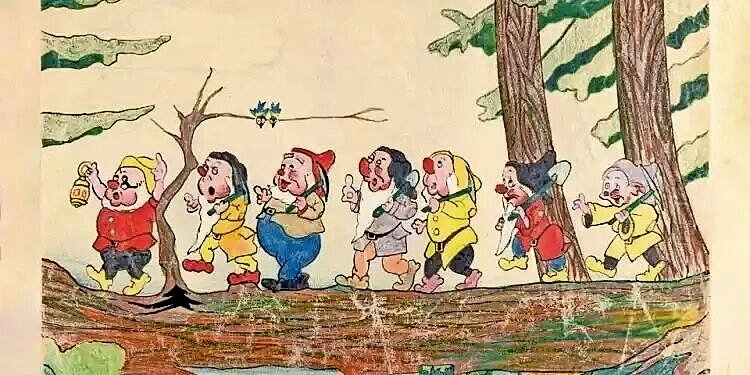Disney characters drawn by Holocaust survivors
The Yad Vashem Holocaust Remembrance Center in Jerusalem is set to showcase a collection of Disney-inspired artworks created by Holocaust survivors and victims.
These rare pieces, including a Pinocchio-adorned jar buried to escape Nazi looting and a Mickey Mouse birthday card preserved for more than seven decades, offer a unique window into how Jews, especially children, found solace and expression through familiar cartoon characters during one of history’s darkest periods.
For 80 years, these artworks remained hidden, some wrapped, damaged or concealed, yet they managed to survive the journey from concentration camps and ghettos. Often the sole possessions of Holocaust survivors, they have now found their way into Yad Vashem’s collections.
As part of the relocation to the new Shaffer Collections Center — which houses millions of historical artifacts, documents, artworks and photographs from countless sources — artistic treasures created by Jews during the Holocaust have been uncovered. Most of these were made by children and teenagers who expressed their emotions through works featuring characters familiar to almost everyone, Walt Disney films.
“One of the most touching Disney drawings was created in March 1941, at the height of the war, inspired by the film ‘Snow White and the Seven Dwarfs’,” says curator Eliad Moreh-Rosenberg, director of Yad Vashem’s Art Collection.
“Henry Kichka, father of Israeli artist Michel Kichka, was then a 15-year-old boy who had lost his family in the gas chambers and found refuge in the magical world of fairy tales.
“After the war, he returned to Brussels and collected items from the family apartment, including this drawing which he gave to his daughter Hanna, who immigrated to Israel in 1970. Hanna passed the drawing to her son Yaron, who received a dedication from his grandfather — ’To Yaron, from his grandpa’.”
Suzanne Schick was 14 when she fled Austria at the outbreak of World War II and hid in Yugoslavia with about 1,200 Jews awaiting immigration permits to Israel. On her 15th birthday, her friends prepared a Mickey Mouse greeting card, which she kept close to her heart for 72 years as the last memory of her childhood, until she entrusted it to Yad Vashem for future generations.
Another item, one of the most prominent artworks created during the Holocaust using cartoon characters, is a colorful jar featuring Pinocchio. The jar was created before the war by artist Lilly Kasticher from Yugoslavia.
“When the war broke out and she was deported with her family to Auschwitz, Kasticher buried the jar in the ground along with documents and photographs as a hope to preserve a last memory,” explains curator Michael Tal, manager of Yad Vashem’s Artifacts Collection.
“Lilly encouraged her fellow prisoners to write poems and draw in order to survive, and after the war, she even brought the creations to Israel inside the jar she had buried in the ground,” says Tal.
The collections center, spanning 63,300 square feet, includes four underground floors and an additional floor housing five of the world’s most advanced laboratories for preserving paper, photographs, artifacts, textiles and art. The center will preserve about 227 million pages of documentation, tens of thousands of artifacts and artworks, and hundreds of thousands of photographs and testimonies from Holocaust survivors.











